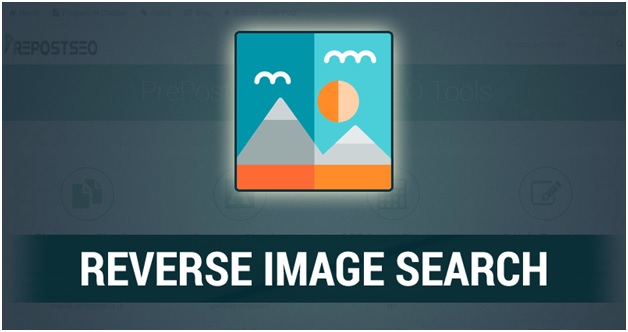How to Track Fake Pictures Using Photo Lookup
Consider that you have uploaded a picture of your latest international business venture. This would obviously have a positive impact as people would know about your business ventures. There is a flip negative side to this as well. Someone may misuse your picture and upload it on a website responsible for scams. In this way, your legitimate profile would be connected to scams. In other words, your reputation would be terribly damaged. Some smart scammers edit pictures and upload them on illegitimate websites. However, if your face is recognizable, you would still lose your reputation. A reverse image search tool saves users particularly image creators from this problem.
Fake pictures can cause large scaled problems
Today, almost everyone who uses the internet is active on Facebook, instagram, twitter and other social media platforms. We interact with other people and share pictures as well. How do you know that a profile picture you posted has not been used on any other website? Consider that you run your own business and someone uploaded your photo on an illegitimate business website, how would it affect you? In simple terms, it would bring down your reputation completely. People would stop trusting you and your business relations would be ruined. Thus, it is important to determine whether fake pictures related to you have been uploaded on the internet or not.
- The reverse photo lookup tool helps you in determining the appearances of an image. Consider that you have uploaded a personal photograph on your Facebook account. This photo should not appear on any other web page apart from your Facebook account or on the profile of someone you have tagged. If the reverse image lookup tool shows more appearances of the image, it simply means that the image has been misused. However, you can get complete information about the usage of your image through the reverse image lookup tool.
How does the reverse image lookup tool work?
A lot of users including professional image creators do not know how the reverse image lookup tool works. The process of using this tool is very simple. Here are the concrete steps which users have to go through.
- First of all, you need to upload the picture of provide its link. Once the image uploading process has been completed, you can proceed to the next step.
- After uploading the image, you should click the button to search for images. When this button has been clicked, all the appearances of the image would be shown to you. If you see that, an image uploaded by you has multiple appearances, it simply means that fake pictures have been uploaded. A reverse image lookup tool identifies all the occurrences of a particular image.
Reverse Image Lookup tools serve personal and professional purposes
As users, we upload both personal and professional snapshots on the internet. For example, if you are running a brand, you would upload a photograph of your brand logo or company meeting on the internet. Similarly, a personal photograph of a holiday may also be uploaded on a social media account. A reverse image lookup tool is meant for both purposes. It helps you in identifying all the appearances of any particular image.
- A lot of business owners suffer when their brand images are used negatively by competitors. This is a tactic to bring down the reputation of the brand. Consider an example. If one of your rival brands copies your logo and uploads it on a scam website, how would your reputation get affected? It is very obvious that there would be a major negative impact on your business reputation. Hence, keeping an eye is important. On a professional scale, it is important to continuously use the reverse image lookup tool so that you know how your company images are being used. Normally business owners do not use these tools. The problem starts when their core images have been misused for a long time.
- Connecting through social media platforms is very common these days. People connect and communicate with each other through these platforms. Photographs are also shared between people but you have to be sure that your personal clicks do not get into the wrong hands. Through a quality reverse image lookup tool, you can determine all the appearances of any personal photograph. Simply upload the snapshot using the tool or present its URL. After that, the reverse image lookup tool would extract all online platforms on which the image has been uploaded. If someone has attempted to misuse your snapshot, you would know about it through this tool.
Protect your corporate image
It is very challenging to come up with a good strong company logo. Even the best brands put in thorough creativity and dedication to design an impactful company image. However, for anyone, it does not take long to copy the image, edit it and reuse it as well. This would obviously tarnish your corporate image. Hence, if you are running a corporate brand, using the reverse image lookup image should be a regular practice for you.
- It is quite hard for a company to build its image again after it has been misused by someone. Brands are recognized by their logos. If the logo is used in a positive and productive manner, the reputation would improve. The other side is that a negative usage of the image would damage the brand reputation. In a nutshell, brand owners should clearly know whether someone is misusing their logo or any other company image. This can be done easily by using the reverse image lookup tool.
Summing It Up
There is nothing bad about uploading images on the internet but technology has both negative and positive sides. Images uploaded on the internet may be accessed by someone who does not use it for a positive purpose. One of your personal photographs may be misused and uploaded on a malicious website. How would you know where the image has been uploaded? The best way is using a reverse image lookup tool. These tools identify all the occurrences of an image so the owner gets to know if any of the images have been misused.
- The Last Human Job? Reimagining Work in the Age of Automation - January 25, 2025
- Eye-Catching Thumbnails: A Powerful YouTube Channel Growth Tool - November 26, 2023
- Unlocking the Tech Trick: How to Create Gmail and Google Voice Without a Number - October 21, 2023







